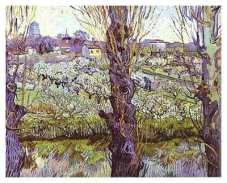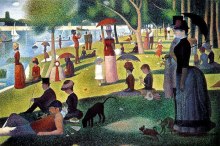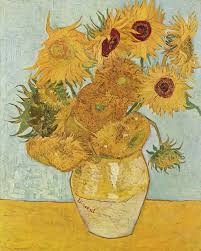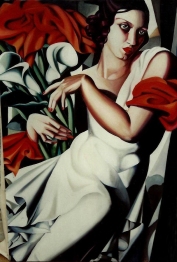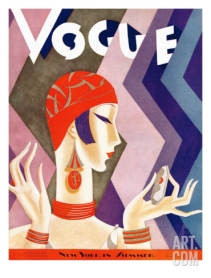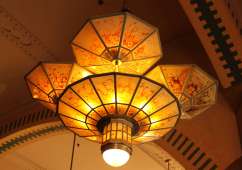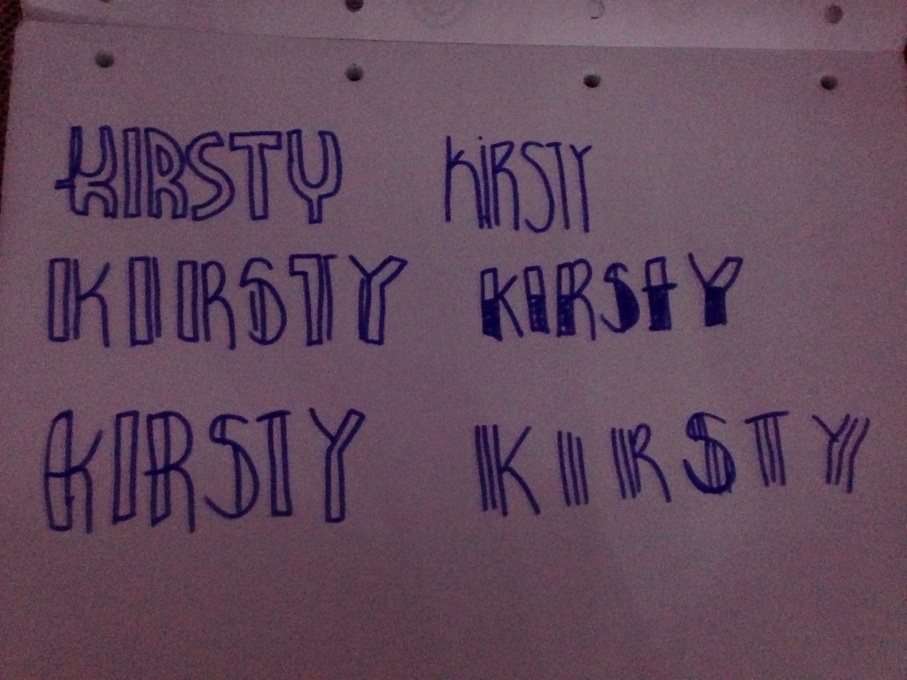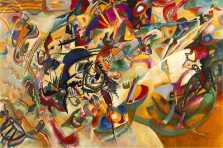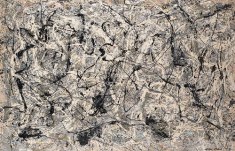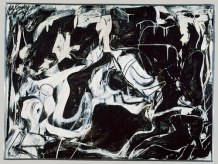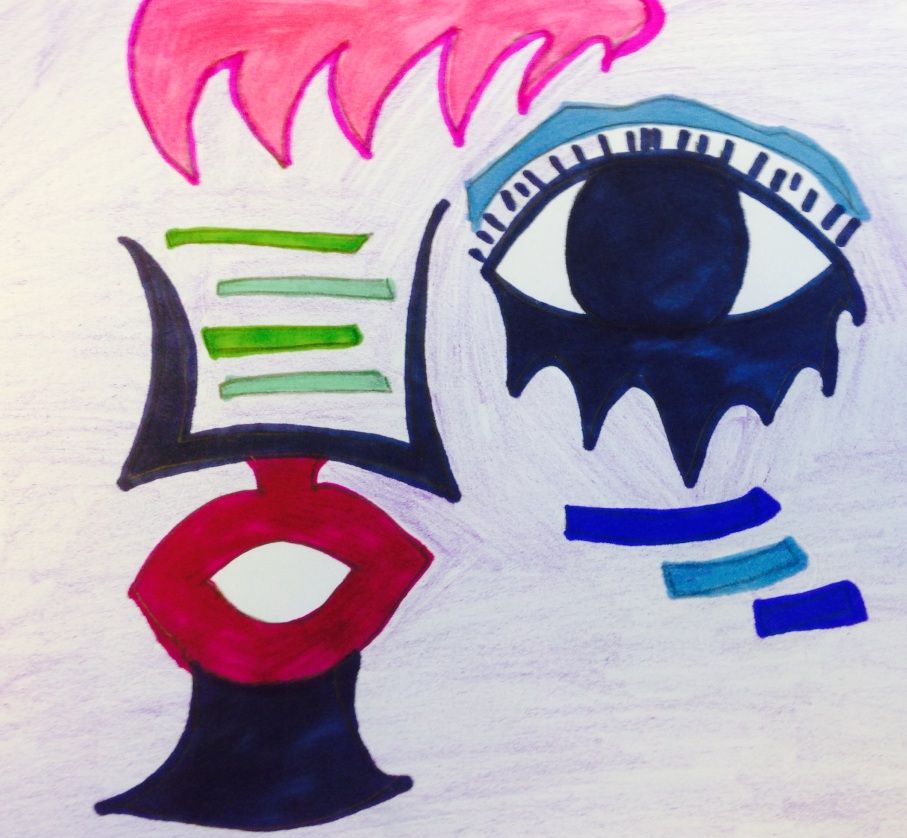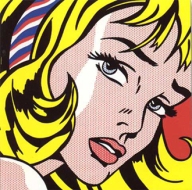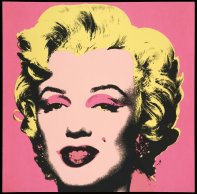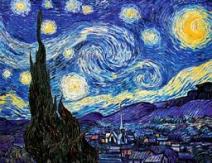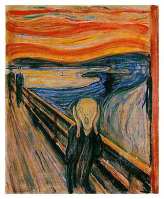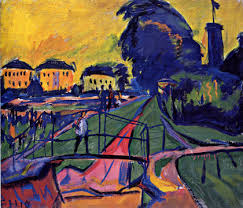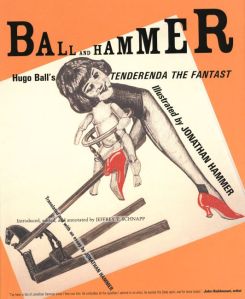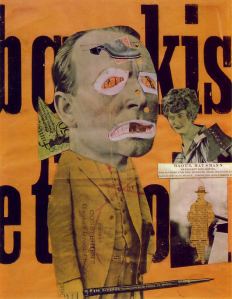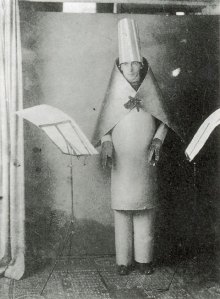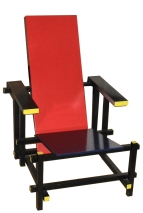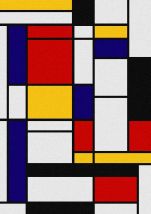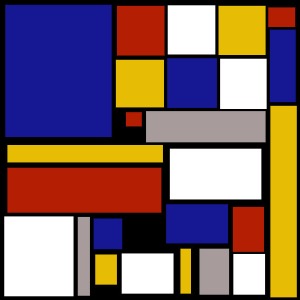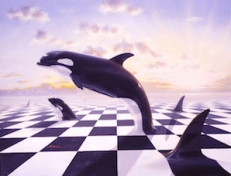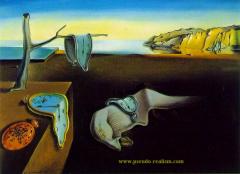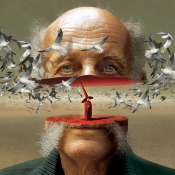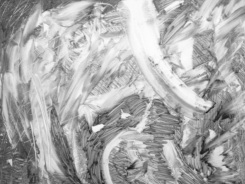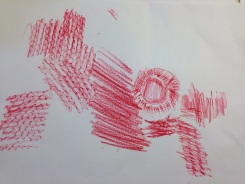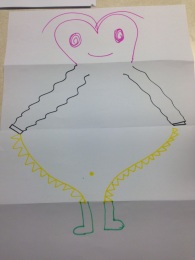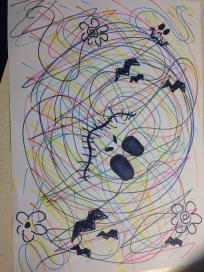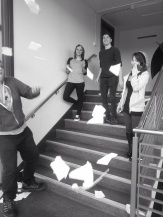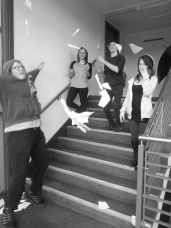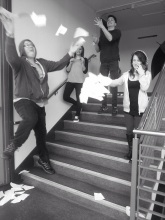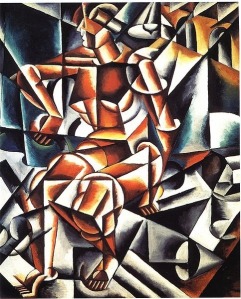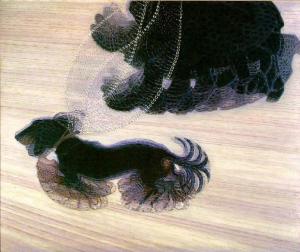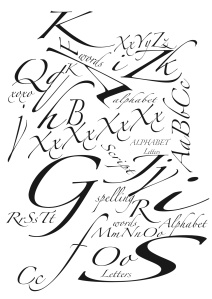Author: kirstymoorlen
Post Impressionism
Post impressionism was not a formal movement or style, the post impressionists were a few independent artists that formed in the end of the 19th century which rebelled against the limitations of the Impressionism. These artists all developed a range of personal styles that focused on the emotional, structural, spiritual and symbolic elements that they felt were missing from the impressionism movement.
Impressionism was the first movement in the canon of modern art, the most revolutionary styles it was gradually absorbed into the mainstream. Artists such as VincentVan Gogh, Georges Seurat, Paul Cezanne and Paul Gauguin pushed the boundaries of the style in very different creative directions and in doing so, laid the foundations of the the 20th century art world. For historical convenience these artists have been labeled as Post Impressionists but, apart from their Impressionist influence, they don’t have that much in common.
The movement that started in France that represented both an extension of Impressionism and the rejection of the styles limitations. The actual term Post Impressionism, was made by the English critic Roger Fry for most of the 19th century painters such as Paul Cezanne ect. Most of the movement artists were french apart from Van Gogh, and most of them started out as Impressionists, each of these abandoned the style, and rejected the limited the aims of the movement for more ambitious expression, and the pure colours of Impressionism.
In general, Post Impressionism led away from the traditional naturalistic approach and toward the major movements of the early 20th century art such as Cubism and Fauvism, which sought to evoke the emotion and experiences through colour. The movement was around from the Mid 1880s to the early 1900s.
The main characteristics were traits from Impressionism which were hugely exaggerated, for example the bright and vibrant colours which were painted thickly on the canvas. Energetic brushstrokes were used to express emotional qualities. The rapid ‘Broken’ brushwork of Impressionism developed into the technique of Pointillism which was where art work was created purely by coloured dots.
(Vincent Van Gogh,View of Arles-Orchard in Bloom with Poplars, 1890)
(Georges Seurat,A Sunday Afternoon on the Island of La Grande Jatte, 1884/1886)
(Vincent van Gogh, Vase with Twelve Sunflowers, 1888)
This is my take of the post impressionist style, I drew a rose but wanted to give it my own post impressionist style. I drew the rose so it wasn’t very realist and almost cartoonish, I was quite free with the drawing style of the outline, for the colours I used non realistic colours such as green blue and yellow for the rose and used lines and circles to colour in so it was actually properly coloured and almost gives the broken brush stroke style. I’m really pleased with how this turned out and think I was successful in recreating the post impressionist style in my own work.
Art Deco
Art Deco, also known as Style Moderne, was a movement in the decorative arts and architecture, making it more of a design movement than an art movement. It originated in the 1920’s and became a major style in western Europe and then United States during the 1930’s. It’s a name derived from the ‘Exposition Internationale des Arts Decoratifs et Industriels Modernes’ which was held in Paris in 1925, this is where the style was first exhibited. Art Deco made its way into fashion and represented modernism. The styles products included both individually crafted luxury items and mass produced wares, but both were made with elegance that symbolised great wealth and sophistication.
The most distinguishing features of the style were simple, clean shapes, which often had a ‘streamlined’ look, an ornament that is geometric or stylised, and often expensive materials, which often included man made substances such as plastics and even natural materials such as jade, silver, ivory ect. Though Art Deco objects were rarely mass produced, the characteristics features of the style reflected the admiration of the modernity of the machine and for the inherent design qualities of machine made objects.
Some of the formative influences of Art Deco were Art Nouveau, Cubism, Ballets, and the Bauhaus. The decorative ideas came from the American Indian, Egyptian and sources from nature. Some motifs of the movement included nude female figures, animals, sun rays, conventionalised forms, and foliage.
Some of the most famous designers of the movement included, Jacques Ruhlmann, Eilel Saarinen, Maurice Dufrene, Jean Puiforcat, Rene Lalique, Raymond Templier and Jean Fouquet Rene Robert. These were all designers in different fields, including fashion designers, jewellers, architects, and even furniture designers. Although the style went out of fashion during World War II, beginning in the late 1960s there was a renewed interest in Art Deco design.
(Tamara De Lempicka, Portrait of Ira P, 1933)
(Eduardo Bentio, Vouge Cover, 1926)
(Cafe American, Amsterdam, 1902)
For my visual study I came up with some ideas of some typefaces that could have been used in the movement. I came up with these ideas from looking at posters from the movement and looking at the design style to create a range of fonts that suited the period. I’m really pleased with how these fonts have turned out and think that they look similar to ones that were used during the Art Deco movement and think I was successful in creating my own.
Abstract expressionism
Abstract expressionism was a post WW2 movement, which developed in New York in the 40’s. It was the first specifically American art movement which achieve international influence and it put New York in the centre of the western art world, which formally Paris. Abstract Expressionism was never an ideal name and label for the movement, it crossed over ideas of artists that filled the canvases with colour and abstract forms and also the artists that attacked the canvases with deep gestural expressionism. However this became the most popular term for the movement. All artists involved in the movement used expressive art to show emotion and universal themes, which more often than not were inspired by Surrealism. After Abstract Expressionism, New York was able to steal Paris role of the leader of the modern art movement and set the stage for Americas post war dominance of the international art world.
Almost all of the artists that would later become abstract painters in New York during the 1940’s-1950’s were affected and influenced of the experience of the Great Depression and their styles matured whilst working in the styles that were influenced by the social realism and the Regionalist movement. By the end of the 40’s most artists had left those styles behind, but the movements encouraged them to work based on personal experience, the time spent painting murals would later encourage them to create abstract paintings on a monumental scale.
Many European modernists came to New York in the 1930’s-1940’s to escape political upheaval and war. Some artists, such as Hans Hofmann became very influential. Hofmann had spent the early years of the century in Paris, where he had met Picasso, Matisee and Braque. Hofmann gained a sophisticated understanding of the Cubism movement and Matisse’s Fauvism which was very under appreciated in New York. With many Europeans moving to New York, it meant that many New York artists were knowledgeable about popular trends in European art. European artists that had moved to New York such as Andre Breton, Max Ernst, and Andre Masson helped to rob some artists of and steal the mythic style they had acquired. As Europe suffered under totalitarian regimes in the 1930’s and later became involved in war, many Americans felt confidence to influence and develop and rhetoric style painting that was appropriate to their own nation.
The movements style was inspired by, Expressionism, Surrealism and, Existentialism. Much like expressionism, this movement used abstract forms and bright colours to portray emotions and personal experiences of the artists and wanted to evoke emotions and ideas to its audiences.
(Wassily Kandinsky,composition vii 1913)
(Jackson Pollock, Number 28, 1950)
(Willem ds Kooning, Black Untitled, 1948)
This is my piece of art for the abstract expressionism movement. For this I drew a face but wanted it to be almost unrecognisable and use bright and bold colours to show the characters emotion. I like how this does look like a face but it’s still abstract because it’s not how a face actually looks and it’s not based on physical reality. I’m really pleased with how this turned out and think I was successful in creating a piece of work in the abstract expressionism style.
Pop Art
Pop art is an art movement that was founded in the early 5o’s in Britain and made an appearance to America in the late 50’s. The movement created a somewhat challenge to the fine art world as the movement was more involved in popular culture, in forms such as advertising, news, ect. The movement takes styles from advertising and comic books, and has similar style to DaDa.
The aim of pop art was to employ images of popular culture and even emphasise the kitschy element of the given culture, this was most often done through the use of irony. Pop art is one of the few movements that precede postmodernism and are some of the earliest examples of Postmodernist art.
The use of advertisement in pop art was artists using objects and themes that were used in advertising at the time, product labels and even logos were very popular among pop artists, like the Campbells soup can labels which were chosen by Andy Warhol. The overall design of Pop Art was very much like Comic style, bright bold colours were used which were heavily outlined with thick black lines, not a lot of detail was used in the paintings which were usually made with Acrylic paint on canvases. Screen Printing was a techniques which really took off during the period and the layering of the Screen Prints, this technique was experimented with by Andy Warhol.
The Independent Group were a group founded in London 1952, were named the founders of the Pop Art movement. The group would gather young painters, writers, critics, sculptors and architects who were looking to challenge the modernist approach to the culture and fine art. At the first IG meeting, Eduardo Paolozzi, the co-founding member, presented a lecture which included a series of collages called Bunk! which he had created through the duration of his time in Paris, even though based in Britain the collages and Pop Art work focused on the imagery of American pop culture, particularly mass advertising.
Some of the most influential Pop art artists were Andy Warhol, David Hockney, Roy Lichtenstein, Billy Apple and Richard Hamilton. Below are some of these artists work.
(Roy Lichtenstein, Girl With Hair Ribbon 1965)
(Andy Warhol, Marilyn Monroe Original 1962-1967)
(Andy Warhol, Campbells Soup Can 1962)
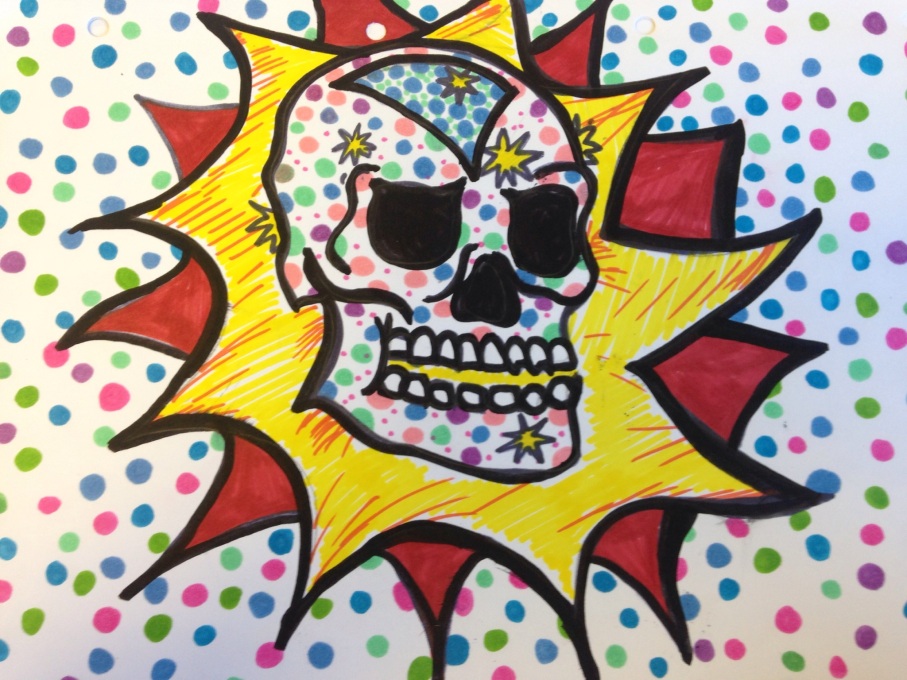
This is my take on the pop art style, i draw the Damian Hirst skull and draw it in a popular Roy Lichtenstein style. I used bright and bold colours and used thick black lines. I used the technique of the coloured dots that Lichtenstein does when painting peoples skin. I think I was able to successfully show the pop art style in this piece and am pleased with how it turned out.
Expressionism
Expressionism is a modernist movement that initially started in paintings and poetry. The movement started in germany in the 20th century. The main trait of the movement was to present the world from a subjective perspective, which would often leads to the image becoming distorted to evoke moods or ideas and make the audience feel a certain emotion rather than presenting physical reality.
In 1905, a group of German artsits which was led by Ernest Ludwig Kirchner, created the group Die Brucke (which translates to The Bridge) in the city of Dresden. This group eventually became the founders of the German Expressionism movement. A few years later in 1911, a similar group of young artists formed the group Der Blaue Reiter (which translates to The Blue Rider) in Munich. The group had members such as Franz Marc, Paul Klee and Auguste Macke, although the actual term Expressionism did not firmly establish itself and become a movement until 1913. Although it was a mainly German movement, most of the precursors of the movement were not German. The movement later declined Germany in the 1930s with the rise of Hitler.
Expressionism was difficult to define because it overlapped with other major movements of the period, such as, Futurism, Vorticism, Cubism, Surrealism and Dada. It can be said that the movement developed mainly because of the reaction to dehumanising effect of industrialisation and the growth of cities.
(Vincent Van Gogh, Starry Night 1889)
(Edvard Munch, The Scream 1893)
(Erich Heckel, Landscape Near Dresden 1910)
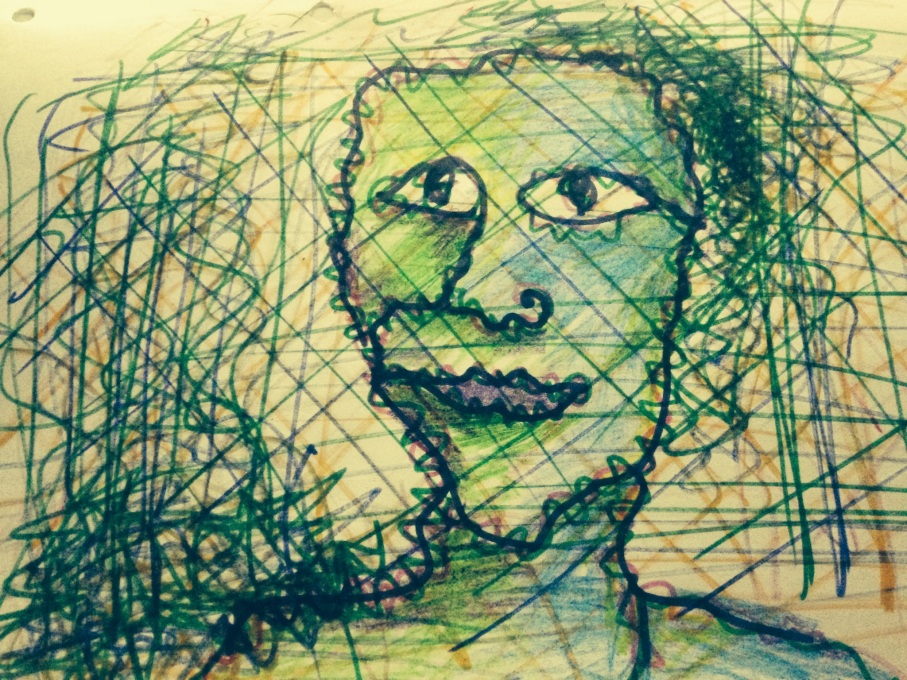
This is my expressionist piece of work. I used blues and greens to portray mellow and maybe even sad emotions along with the persons jumbled lines and features and his expressionless face. I used a filter for this image just to remove all white from the image and add some more dull tones to fit the theme of the work. I’m really pleased with how this turned out and think I was successful in creating something In an expressionist style. I wanted to use non realistic colours and scribbled lines so it was more emotion and feelings instead of physical reality.
Dadaism
Dadaism was used to distract people from the depression of the war and make fun and make digs at the upper classes, and the intellectual and rigid way of life at the time. Was one of the first art movements that didn’t take its self seriously and reject all other forms of law and logic to create something completely unique, abstract, absurd and even uses humour. The idea of using humour was to lighten the spirits of the world and try cover up the depression of the war. Exaggeration is used to over complicate things and even make certain aspects completely unrecognisable.
Dadaism was a very antiestablishment movement and was introduced to create a reaction. The work was often extremely risky and sometimes offensive, it was also used to call out people and stir things in a humorous way.
This art movement moved away from all forms of traditional art work and expressed its self into many other forms. Dadaism was also involved in fashion, people would often make and wear unusual costumes, as well as these being visually intriguing they would also be made out of strange materials, sometimes even using things like metal and cardboard.
Dadaism inspired more than just humour, fashion and art, it even moved on to inspire professional graphic designers and typographers and was introduced to many forms of performances.
Tristan Tzara and Hugo Ball are some of the most influential and important artists from the period. Tzara was a french pet, shows the development of the period and how its transitioned into something much bigger than actual artwork and how Dadaism became an actual way of life for many. The idea of being against laws and social groups is something that Dadaism was bases upon, but it has been argued that the idea contradicts itself as the movement itself is a social group. So if you are intact a true Dadaist, you are against Dadaism.
(Hugo Ball, Flight out of Time 1927)
(Raoul Hausmann, The Art Critic 1919-1920)
(Hugo Ball, Poetry Reading 1916)
These are some important pieces of work from the period, one thing that was heavily used in the period was the collage technique and juxtaposition, as it would allow the artist to create strange, unusual and abstract work that showed alot of confusion. The third picture was one the sort of costumes that were made in the period, they weren’t always easy to wear and functional.
This is my interpretation of the collage style. I used ripped pieces from magazines, i used different style of magazines so that the theme of the collage would be juxtaposed and create confusion. I really like the style of the collage and think it can be used to create some very interesting and unique pieces of artwork.
De Stijl
Amongst the chaos of the war and the revolutionary new perception of painting, in the Netherlands there was a huge interest in ‘new art’. Because the Netherlands remained neutral during the war, dutch artists weren’t able to leave the country after 1914 and kept them isolated from the world of international art, most importantly, Pairs, which was the art centre at the time. During this time, artist Theo Van Doesburg started gathering artists to set up a journal and create a new and unique art movement. Doesburg was also a writer, poet and critic who at the time was more successful writing about art than actually creating it. In 1915 artist Theo Van Doseburg started meeting and collecting artists who eventually became some of the founding members of the Journal. Piet Mondrian was the first artist he met, as an exhibition in Amsterdam. Mondrian had moved to pairs during 1912 but wasn’t allowed to leave once war broke out. Doesbury later met Vilmos Huszar, poet Anthony Kok and architect Gerrid Rietveld and formed the movement.
The De Stijl style mainly consists of the 3 primary colours, and the 3 primary values, mised with horizontal and vertical lines. This style was used in paintings, architecture and furniture. The most famous example of De Stijl architecture is the Schroder House, designed by Rieitveld in Utrecht, the Netherlands in 1924.
These are some examples of furniture and the inside decor of a house inspired by the De Stijl style. They follow the same design technique as the paintings of just using the primary colours, the primary values and the horizontal and vertical lines.
Like other movement of the time, De Stijl, which simply translates to ‘the style’ in dutch, emerged in response to the horrors of the world war, and tired to remake society. De Stijl embraced a utopian vision of art and transformative potential and was used to distract people from the horrors and deviation the world war brought.
Some of the most important artists of the movement were, Theo Van Doseburg, Piet Mondrian, Jan Wils, Gerrit Rietveld, and Jean Gorin.
(Rietveld, Chair (unknown date))
(Piet Mondrian, 1939-42)
(Rietveld Schroder, House Interior 1924)
This is my take on a piece of art from the movement. To make this I went on photoshop and placed blue, yellow, red, grey and white boxes onto a black background. It was important to create a layout that didn’t look to crowded, too random, or have any of the boxes overlapping. Im really pleased with how this came out and think that it looks like a piece of art from the movement and I feel I was successful in creating something in the same style but made it modern by making it on a modern software such as photoshop.
Surrealism
Surrealism was the movement that replaced Dadaism. Much like Dadaism, Surrealism was highly influential and bizarre. The movement wasn’t that much different to Dadaism and even used and enhanced some of Dadaist characteristics such as, performances, the use of an MC to announce/explain each action, comedians, noise, music, provoking the audience, highly based on the shock factor.
The movement was a bit more psychological and focused a lot on the mind. Freud was used a lot in the movement and his psychology techniques. Techniques ideas and themes, such as automatism, dream analysis, unconsciousness, irrational, surprise, unexpected juxtaposition, memory and psychology. The movement ended when the world war ended.
The movement was a very male dominated movement, and included artists such, Salvador Dali, Andre Benton, Rene Magnette. These are some of the more influential and famous artworks of the period.
(Ray Tracer, Computer Graphics, unknown date)
(Salvador Dali, The Persistance of Memory 1931)
(Igor Morski, 1960)
These are some of my own interpretations of different styles and techniques that were used and enhanced in the movement such as, Frottage, Grattage, Automatic drawing, The exquisite corpse game, and even a group interpretation of Phillip Halsman, Salvador Dali photo. All these techniques were interesting to learn and actually fun to recreate. The techniques offer a lot of freedom for the artist.
Futurism
Futurism is an art movement that was founded in Italy in the early 1900’s. When first discovered, Futurism was a major contrast to previous art movements and artworks. Futurist work was all about, noise, pollution, speed, cities and very busy artworks. The idea of futurism was all about embracing the new world and all the technological advances to come. Futurist artists were inspired by the problems of modern experiences, and they tried to create paintings and artworks that would provoke all senses, not just what catches the eye, they really tried to embrace and capture the spirit of the new worlds and cities.
Unlike other art movements, Futurism wasn’t identified by or known for a distinctive style or technique, instead it was a mix of other movements such as Impressionism, Symbolism, Divisionism and even Cubism.
As the Futurist artists were obsessed and amazed by all the new technical advances, this meant that their artwork wasn’t limited to just painting platforms and artists experimented with other ways and techniques of producing art. Chrono-photography was heavily played with during this movement, as it would capture movement and often created quite abstract pieces of art, animation and cinema was also experimented with as the Futurist artists loved to show movement in their work and create busy artworks. The Futurist artists worked in many fields of the arts, such as painting, ceramics, sculpture, graphic design, interior design, theater, film, literature, music and architecture. Futurism was first recognised when the book ‘Futurist Manifesto’ was published in 1909, it captured the Italian culture and showed its progression and change into Futurism. Umberto Boccioni, Giacomo Balla, Gino Severini, and Carlo Carrà, were all artists that worked in the Futurist period.
A lot was going on in Italy around the start of Futurism, for example in 1909, the Italian general elections were being held, establishments were being made, sport was becoming increasingly popular and many Championships and other cup games were being held. The Racconigi Bargin was also agreed on in 1909. The agreement was between the King Victor Emmanuel III of italy and Nicholas II of Russian Empire.
(Lyubov Popova, Air Man Space, 1912)
(Giacomo Balla, Dynamism of a Dog on a Leash, 1912)
